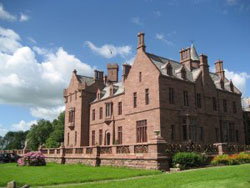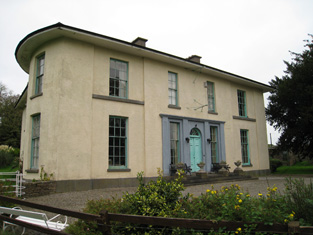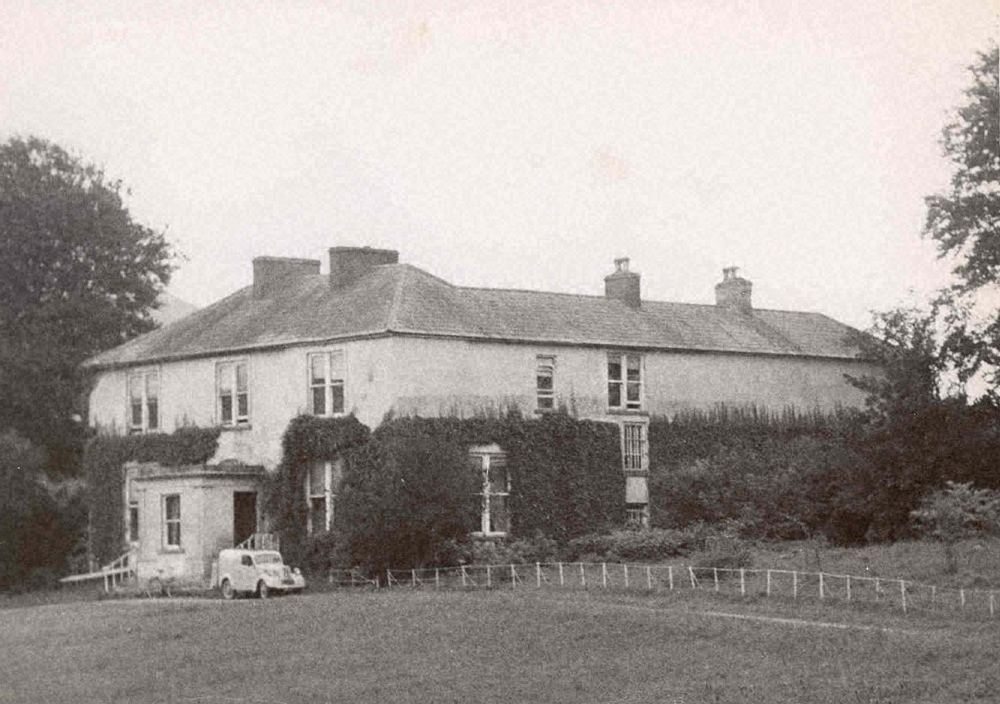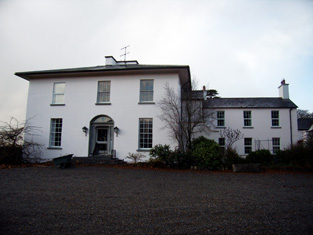Massy Lodge
Houses within 15km of this house
Displaying 46 houses.
Houses within 15km of Massy Lodge
Displaying 46 houses.
| House name | Description | |
|---|---|---|
| Castle Oliver | The original Castle Oliver or Clonodfoy was the home of the Oliver family in the 18th and early 19th centuries. It was replaced by the present building in the mid 19th century. In 1814 Castle Oliver was occupied by George Fosbery who may have been employed by the Olivers. In 1837 Lewis described the castle as being in a very dilapidated state. It then belonged to R. O. Gascoigne of the county of York whose bailiff resided in it. The new building was designed by George Fowler Jones and built in the Scottish baronial style for the Oliver Gascoignes. At the time of Griffith's Valuation the castle was valued at £75 and the house at £48 and both were in the possession of Elizabeth O. Gascoigne and her brother-in-law, Frederick Charles Trench. The house was eventually inherited by Elizabeth's step-grandson, William Cosby Trench. He was the occupier in 1906 when it was valued at £125. Restored in the early 21st century it now provides self catering accommodation and is a venue for functions such as weddings. |

|
| Ahnagurra | Ahnagurra was the residence of Thomas T. Adams in 1837 and at the time of Griffith's Valuation, when the buildings were valued at £26. He held the property from Francis Coppinger. | |
| Ballynalacken | A house valued at £15 and occupied by George Gubbins who held it from Francis Coppinger at the time of Griffith's Valuation. It is no longer extant. | |
| Griston House | The residence of a branch of the Massy family, occupied by Frederick Massy in 1814. Described by Lewis in 1837 as the fine old family mansion of the Masseys. Fitzgerald writes that Charles Massy of Griston was a brother of Lord Massy and 1st Lord Clarina. At the time of Griffith's Valuation it was valued at £12 and occupied by Michael McMahon, who held it from Charles O'Brien Massy. | |
| Ryves Castle [Castle Jane] | Ryves Castle, previously known as Castle Jane, was the home of the family of this name in the 18th and early 19th centuries. It is referred to as Castle Jane by Wilson in 1786 when he notes it as the seat of Mr. Ryves. By the 1830s however William H. Ryves of Ryves Castle appears to have moved to live in Brighton, as the birth of many of his children is recorded in the Limerick newspapers as having taken place there. In 1826 Fitzgerald records Ryves Castle as the residence of John Lowe. Lewis referring to the parish of Knocklong, notes that Thaddeus R. Ryan was resident at Castle Jane and that there was a vault of the Lowe family located in the grounds of Ryves Castle, that family having previously been its proprietors. For the parish of Ballyscanlan he records Ryves Castle as the residence of P. [T?] Ryan. At the time of Griffith's Valuation the house was valued at £29 and occupied and held in fee by William H. Ryves. In 1906 it was valued at £31 and was occupied by Thomas J. Franks. Later owned by Mr D. Fleming, this house is now demolished. | |
| Scarteen | Thaddeus R. Ryan was resident at nearby Castle Jane [Ryves Castle] in 1837 as recorded by Lewis and Scarteen was unoccupied. John Ryan was the occupier of Scarteen in the early 1850s when the house was valued at £30+. He held the property from William H. Ryves. His widow Alice owned 50 acres in county Limerick in the 1870s. The Ryans still live at Scarteen where the famous pack of hounds of that name is kennelled. |

|
| Ballynacourty | In 1837 and at the time of Griffith's Valuation occupied by Michael Burke. In the 1850s it was valued at £13 and held from the Honourable C.B. Wandesforde. | |
| Darragh House | The residence of Fred Bevan in the early 1850s, held by him in fee and valued at £12+. In the 1870s Hamilton Geale/Gale lived at Durragh Lodge. The house is now known as Darragh House and is still extant and occupied. Self catering accommodation is available, see www.darraghcottages.com. |

|
| Janeville | A house located very close to the county Tipperary border, occupied by the Reverend R. Lloyd in 1837 and by Samuel R. Harding at the time of Griffith's Valuation. The buildings were valued at £17+ and held from Thomas L. Sadlier. | |
| Glenefy/Gleneefy | Built for George L. Bennett by Charles Frederick Anderson see http://www.dia.ie/works/view/256 The house is named on the first Ordnance Survey map as Gleneefy but on the later 25-inch map as Glenefy. In 1837 Castlecreagh was the residence of G. Bennett and at the time of Griffith's Valuation Castlecreagh, valued at £26 was held by George L. Bennett in fee. In 1906 occupied by William H.M. Bennett and still valued at £26. It is still extant. |

|
| Riversdale | Built by the Massys in the early 19th century and occupied by Hugh Massy in 1837 and held by him in fee at the time of Griffith's Valuation when the house was valued at £30+. Lynch writes that this house was bought from the Massy Dawsons by John Noonan in 1922, who ran it as a hotel. |

|
| Stagdale Lodge | A Massy house occupied by members of the Massy family from the late 18th century. It was the home of Hugh Massy, a younger brother of George Massy of Glenwilliam Castle, at the beginning of the 19th century. Held by W. Massy in 1837, Lewis records the "fine avenue of stately beech trees". William Massy was still resident at the time of Grifffith's Valuation holding the property from Hugh Massy. In 1906 occupied by Hugh H.G. Massy and valued at £30.10 shillings. | |
| Loughananna | At the time of Griffith's Valuation a house at Loughananna was occupied by James McGrath, valued at £10+ and situated on the Kingston estate. By 1906 the mansion house at Loughananna was valued at £50+ and Abel Buckley is recorded as the occupier. | |
| Bosnetstown | The Bennett family were resident at Bosnetstown from the early 19th century. Charles Bennett of Bosnetstown was a coroner for county Limerick in the 1810s. Located on the estate of Lord Lisle this house was occupied by George W[heeler] Bennett in 1814 and 1837 and in the early 1850s by George Bennett. The property was valued at £14. In the 1870s George Wheeler Bennett of Kilfinane held 156 acres in the county. The Bennett also lived in other houses closeby at various times for example Kilfinane House. http://members.iinet.net.au/~nickred/trees/bennett.pdf | |
| Ballynahinch | A house valued at £11 occupied by Thomas Cleary at the time of Griffith's Valuation and held with 354 acres from the Trench/Gascoigne estate. Thomas Cleary of Ballinahinch owned 454 acres in county Limerick in the 1870s. A house is still extant at the site. | |
| Spa Hill | A home of the Oliver family, occupied by Charles Deane Oliver in 1814 and by William Oliver in 1837 and at the time of Griffith's Valuation. The buildings were valued at £23+ and William held them from the Trench/Gascoigne estate, with a corn mill. |

|
| Ballywire | The demesne of this house straddled the border between counties Limerick and Tipperary. In 1826 Fitzgerald refers to the house having been "lately fitted up and furnished in a very tasteful manner". Godfrey Massey was resident at Ballywire in 1814. By 1837 it had become the home of John Bolton Massy who held the property in the 1850s from the Provost and Fellows of Trinity College, Dublin. It was valued at £40. This house is still a residence. |

|
| Knocktoran | This late 19th century seat of the Webb family is now a stud farm. Anna Thomasina Webb occupied the house in 1906 when it was valued at £32. Owned by Major S.N.C. Webb in 1943. It is still extant. |

|
| Garryspillane House | A mansion house valued at £16.15 shillings was located in this townland in 1906. It was occupied by Stafford Delmege, second son of the Reverend John Delmege, whose representatives owned 525 acres in county Limerick in the 1870s. A house labelled Garryspillane House is shown on the 25-inch Ordnance Survey Map of the 1890s. There is still an extant house at the site. | |
| Ballynacourty | Originally the home of the Dawson family, it passed by marriage to the Massy family and was the seat of the Massy Dawsons in the 18th and 19th centuries. Occupied by J. H. Massy Dawson in 1837 and owned by the estate of Reverend John M. Dawson in the early 1850s. It was held in fee and was valued at £75. In 1839 the Ordnance Survey Name Books describe it as "beautifully situated and in good repair, the residence of Rev. J.M. Dawson". In 1894 Slater refers to it as the seat of George Staunton King Massy-Dawson. This house was a ruin by the mid 20th century. |

|
| Springvale | This house was ccupied by Roger Bourke in 1814 and by Roger S. Bourke in 1837. Roger Burke was married to a sister of Garret Nagle of Ballinamona. William Baily was resident in the early 1850s and held the property from the Earl of Kingston. The buildings were valued at £14.10 shillings. Grove White writes that Springvale was purchased by George Grehan of Clonmeen in 1855 and John J. Therry, his agent, lived there. In 1942 the Irish Tourist Association noted it as the residence of Mrs. Helen Clancy, a descendent of Therry. Although abandoned for some years in the 20th century the house has now been restored and is lived in again. |

|
| Ballinwillin | Lewis writes that this house was the occasional residence of the agent to Lord Kingston, reputedly built by Arthur Young who came to Mitchelstown in the 1770s as a land agent. In the mid 19th century Neale Brown was the occupant holding the house valued at £22.15 shillings and 13 acres from the Earl of Kingston. This house is still a well maintained residence. |

|
| Mitchelstown Castle | The original castle belonged to the FitzGibbons, the White Knight. It passed through the marriage of Margaret FitzGibbon and Sir William Fenton to the heirs of their daughter, Catherine, and her husband, Sir John King. By the mid 18th century the Kings had replaced the castle by a house which was altered and extended over the years. In 1786 Wilson refers to it as "the very magnificent seat of Lord Kingsborough". In the 1820s the 3rd Earl built a new castle in anticipation of a visit from George IV which never happened. This was a huge building in the Gothic Revival style, valued at £180 in the mid 19th century. It remained in the possession of the Kings until the death of Lady Kingston, widow of the 5th Earl. In 1922 the castle was looted and burnt and the stones were later used to build a church at Mount Melleray. In 1943 the Irish Tourist Association Survey provided a detailed description of the castle and its history and noted that portion of the cellars and foundations were still visible. |

|
| Marshalstown | This house was known as Castle Eugene in 1837 when it was the home of Eugene O'Neill, medical doctor. Dr O'Neill was still resident in the early 1850s when the house was valued at £41.10 shillings and held from the Earl of Kingston. This house no longer exists. | |
| Mounteagle Cottage | Hajba writes that this was a sporting lodge of the Earls of Kingston. In the early 1850s it was occupied by Thomas O'Brien and valued at £14.10 shillings. It is still a residence. | |
| Killee | The seat of the Montgomery family from the mid 18th century, occupied by George Montgomery in 1814 and by William Quinn Montgomery in the early 1850s. It was held in fee at this time and valued at £43. Killee remained in Montgomery possession until the 1930s. It is still occupied. |

|
| Broomhill | Valued at £11, occupied by James Geran and held from James N. Cronin at the time of Griffith's Valuation. Later the home of a member of the Montgomery family and still inhabited. | |
| Cloonkilla | James H. Mandeville held buildings valued at £21 from James N. Cronin among the woods at Cloonkilla at the time of Griffith's Valuation. | |
| Shanbally | In 1786 Wilson refers to Shanbally as a seat of Viscount Lismore. It was occupied by John Mahoney and valued at £10.15 shillings at the time of Griffith's Valuation, held from Viscount Lismore. In 1894 Slater refers to it as a residence of Viscount Lismore. | |
| Ballywilliam | Joshua Sutton lived at Ballywilliam in 1814. In 1851 the estate of William Parry Sutton, a minor, was offered for sale in the Encumbered Estates Court. It included interest in the lands of Shanrahan. The purchasers included Messers. Carroll, Greaves and Mooney, in trust. At the time of Griffith's Valuation, James King was resident, when the buildings were valued at £9.10 shillings and held from the Irish Land Company. |

|
| Galtee Castle | Built in the late 18th century as a hunting lodge, it was described in the Kingston sale rental of July 1851 as a "handsome cut stone building, erected in a tasteful style of architecture, with suitable offices .... beautifully situated in the curve of a well planted glen..". Located close to the eastern bank of the Attychraan River at the base of the southern slope of the Galty Mountains, this house was occupied by James Law in the mid 19th century, valued at £29+ and held by him in fee. Noted by Slater in 1894 as the home of Nathaniel Buckley and of Abel Buckley in 1906 when the buildings were valued at £130. The house is no longer extant. Also known as Mountain Lodge. | |
| Mount Bruis | The Inventory of Irish Architectural Heritage dates this house from the mid 18th century. It was occupied by Doherty Esq in the 1770s and in 1786. The residence of Edmund Scully in 1814, Mrs Doherty in 1837 and Thomas Dwyer in the early 1850s. Dwyer held the property from Irwing Bagnell and the buildings were valued at £25. In 1840 the Ordnance Survey Name Books described it as "a very old building and in middling repair". It is still extant. |

|
| Woodville | Lewis records Matthew Gibbons [Givens?] as the occupier of this house. Mathew Givens was resident at the time of Griffith's Valuation and held the house valued at £15 from the estate of Reverend John M. Dawson. In 1839 the Ordnance Survey Name Books describe it as "in excellent repair and beautifully ornamented". It is still extant and occupied. |

|
| Ballyglass House (Clanwilliam) | Lewis records Mrs Slattery as resident at Ballyglass in 1837. In 1840 The Ordnance Survey Name Books refer to it as a house "in good repair, the residence of John Burke". It is recorded under both Clonpet and Cordangan parishes. By the mid 19th century it was the home of Thomas Mulcahy. The house was valued at £18.10 shillings and was held from Robert Maxwell. Buildings still exist at this location. | |
| Brookville | In 1840, the Ordnance Survey Name Books describe Brookville as "of very large dimensions, in very good repair, the residence of James Sadlier". He still lived at Brookville in the mid 19th century when the house was valued at £30 and held from James H. Smith Barry. This house, located on the south side of Tipperary town, is still a residence. |

|
| Mooresfort | The home of the Crosbie Moore family in the 18th and early 19th century, Wilson refers to Moore's-fort as "the handsome seat of Edward Moore" in 1786. Lewis records Maurice Crosbie Moore as resident in 1837. At the time of Griffith's Valuation Edward C. Moore was still in possession of Mooresfort. However it was advertised for sale in 1852 and sold to Charles Moore of county Antrim, who altered and remodelled the house, reducing it from a 3 storey to a 2 storey house. The house remained in the possession of this family into the 20th century. It is now the main residence on a working farm. |

|
| Damerville | Austin Cooper Chadwick, third son of John C. Chadwick, lived at Damerville in the 1830s. In 1840 the Ordnance Survey Name Books describe it as "a modern structure in good repair". By the time of Griffith's Valuation [his widow] Mrs Anne Chadwick was resident. The house was valued at £10 and held from the Earl of Portarlington. It is still extant. |

|
| Shrone Hill | Shrone Hill or Shronell House is a mid 18th century house. In 1786 Wilson describes it as "once a magnificent building of the late Mr. Damer, now belonging to Lord Milton and in ruins". It was occupied by the Sadlier family in the 18th and 19th centuries. The Ordnance Survey Name Books refer to it as the residence of William Sadlier in 1840. At the time of Griffith's Valution the house was valued at £20 and leased by Clement Sadlier from the Earl of Portarlington. It is still extant. |

|
| Damer's Court | In 1837 Lewis refers to this house as follows "built about a century ago by John Damer, passed to the Earl of Dorchester and then to Lady Caroline Damer his daughter and sole heir and is now the property of the Earl of Portarlington. The mansion was taken down in 1776". It is marked on Taylor and Skinner's map. In 1786 Wilson refers to it as "the very noble and beautiful seat of Lord Milton", On the 1st edition Ordnance Survey map it is labelled "Damerville Court [in ruins]". There is no trace of this house now. | |
| Glenbrook Cottage | Thomas Holmes was leasing this property from the Massy-Dawson estate at the time of Griffith's Valuation when it was valued at almost £4. It is not named on the 1st edition Ordnance Survey map but appears as Glenbrook Cottage on the 25-inch edition of the 1890s. It is still extant and occupied. Local sources suggest that the original house dates to the seventeenth century and that the Holmes family called it Clydeingrove. |

|
| Mountain Lodge | In the mid 19th century Viscount Lismore owned a house/hunting lodge valued at £7 in the townland of Cullenagh (2,740 acres) which he also owned. This building has since been extended and is still in use as a youth hostel. |

|
| Ballybeg (Mitchelstown) | In 1786 Wilson states that "Ballybeg, the seat of Mr. Spratt, was pleasantly situated at the foot of a lofty mountain" outside Mitchelstown. Local history suggests that this was a property acquired by Devereux Spratt in the 17th century. It is not named on the 1st edition Ordnance survey map though buildings are shown at the site. | |
| Kilshanny | Wilson, writing in 1786, refers to Kilshanan as the seat of Captain King. An unnamed property is shown in the townland of Kilshanny on the 1st edition Ordnance Survey map which was later to be the site of Mitchelstown workhouse. It is no longer extant. | |
| Aghacross | Wilson, writing in 1786, refers to Aghacross as the seat of Mr. Anderson. No substantial residence is shown in this area on the 1st edition Ordnance Survey map. The townland was in the possession of William Anderson at the time of Griffith's Valuation. A modern farm exists at the site now. | |
| Sandymount (Cordangan) | In 1840 the Ordnance Survey Name Books refer to Sandymount House "in good repair", part of the estate of James Sadlier. By the time of Griffith's Valuation, it was being leased by F.J. Mansergh from the Smith-Barry estate and valued at £7 5s. Buildings are still extant at the site. | |
| Ballynilard Cottage | In 1840 the Ordnance Survey Name Books refer to Ballynilard Cottage as the residence of Robert Smithwick, "pleasantly situated and in good repair". At the time of Griffith's Valuation, the townland was part of the Smith-Barry estate. Robert Smithwick was leasing a house valued almost £10 while William Evans, MD, was leasing another house in the townland valued at £10 5s. Ballynilard Cottage is labelled Cottage on the later 25-inch map of the 1890s and a house still exists at that location. |

